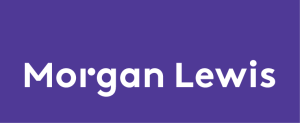They often present superior interest rates compared to customary financial accounts. If you seek an inert method to accelerate your capital accumulation, elevated-output financial solutions are a noteworthy alternative, particularly for short-range financial objectives.
Nevertheless, prior to initiating an elevated-output financial solution, there are several factors necessitating contemplation. The legal aspect can be quite confusing for most people. In this article, we will go over the most overlooked legal aspects of high-yield savings accounts.
We will cover how they fit into the broader framework of banking and finance law as well as the regulatory requirements for qualifying. With this information, you will be set to open and operate a high-yield savings account without a problem.
1. How do They Fit in the Broader Framework of Banking and Finance Law?
High-yield savings avenues (HYSAs) hold appeal for many individuals owing to their elevated interest rates. For instance, the Western Alliance bank savings account interest rate stands at 5.36% per annum. However, achieving the status of "high-yield" involves intricate qualifications behind the scenes. Despite common assumptions, there isn't a singular legal delineation. Rather, EYSAs manoeuvre through a complex framework of regulations established by the Federal Deposit Insurance Corporation (FDIC).
One key aspect is Regulation D, which limits the number of withdrawals you can make from certain savings accounts each month (typically six). This restriction helps maintain a balance between offering higher rates and ensuring banks have access to deposited funds. Moreover, certain High-Yield Savings Accounts (HYSAs) might entail prerequisites concerning minimum balances to meet the promoted interest rate. It's noteworthy that the FDIC does not directly oversee interest rates.
Financial institutions possess a degree of latitude in establishing their HYSA rates, influenced by market dynamics and internal tactics. However, they must clearly disclose these rates and any qualifying requirements to comply with consumer protection laws.
So, while there's no single legal hurdle to jump for a HYSA to exist, these regulatory considerations ensure a baseline framework for both banks and consumers.
2. Implications of Interest Rate Changes
High-yield savings accounts present an enticing opportunity for capital growth through saving, yet the interest rates they offer are subject to fluctuation. Grasping the impact of interest rate variations on your High-Yield Savings Account (HYSA) is vital for aligning your expectations and optimizing your gains.
The Federal Reserve plays a significant role in interest rates. By adjusting the federal funds rate, they influence borrowing costs across the financial system. When the Fed raises rates, it often triggers a rise in HYSA interest rates as well. Banks become more willing to offer higher rates to attract deposits they can then lend out at a profit.
However, the opposite can also occur. If the Fed lowers rates, HYSA interest rates may follow suit. Banks have less incentive to offer competitive rates when borrowing becomes cheaper.
The good news is that HYSA rates are typically more responsive to changes than traditional savings accounts. This means they can adjust upwards faster when rates rise, but also decline quicker when rates fall.
3. Consumer Rights and Protection
The Federal Deposit Insurance Corporation (FDIC) holds significant importance in the financial sector. It offers insurance protection for deposits up to a specified limit (currently $250,000 per individual depositor, per insured financial establishment) in cases of institutional insolvency. This guarantees the protection of deposited funds, promoting peace of mind during periods of uncertainty.
Furthermore, ensuring consumer protection involves the thorough and accurate provision of information. Financial entities are bound by legal requirements to clarify the terms and conditions of your High-Yield Savings Account (HYSA), including interest rates, fees, and any criteria for sustaining minimum balances to access these rates. This transparent approach facilitates well-informed choices concerning your account, preventing unexpected circumstances.
Keep in mind, that you retain entitlements regarding accessing your finances. Although Regulation D may impose constraints on monthly withdrawals from High-Yield Savings Accounts (HYSAs), it does not impede your capacity to withdraw your complete balance whenever necessary. Penalties might apply for surpassing withdrawal thresholds, yet you maintain authority over your funds at all times.
High-yield savings accounts (HYSAs) offer potential for capital growth. Yet, as we've discussed, there's depth beyond enticing interest rates. It's vital to recognize that HYSAs don't suit every circumstance. Factor in your savings targets, risk threshold, and accessibility requirements when selecting an HYSA. By integrating legal parameters and your fiscal aims, you can utilize HYSAs adeptly to advance towards your financial aspirations.





















